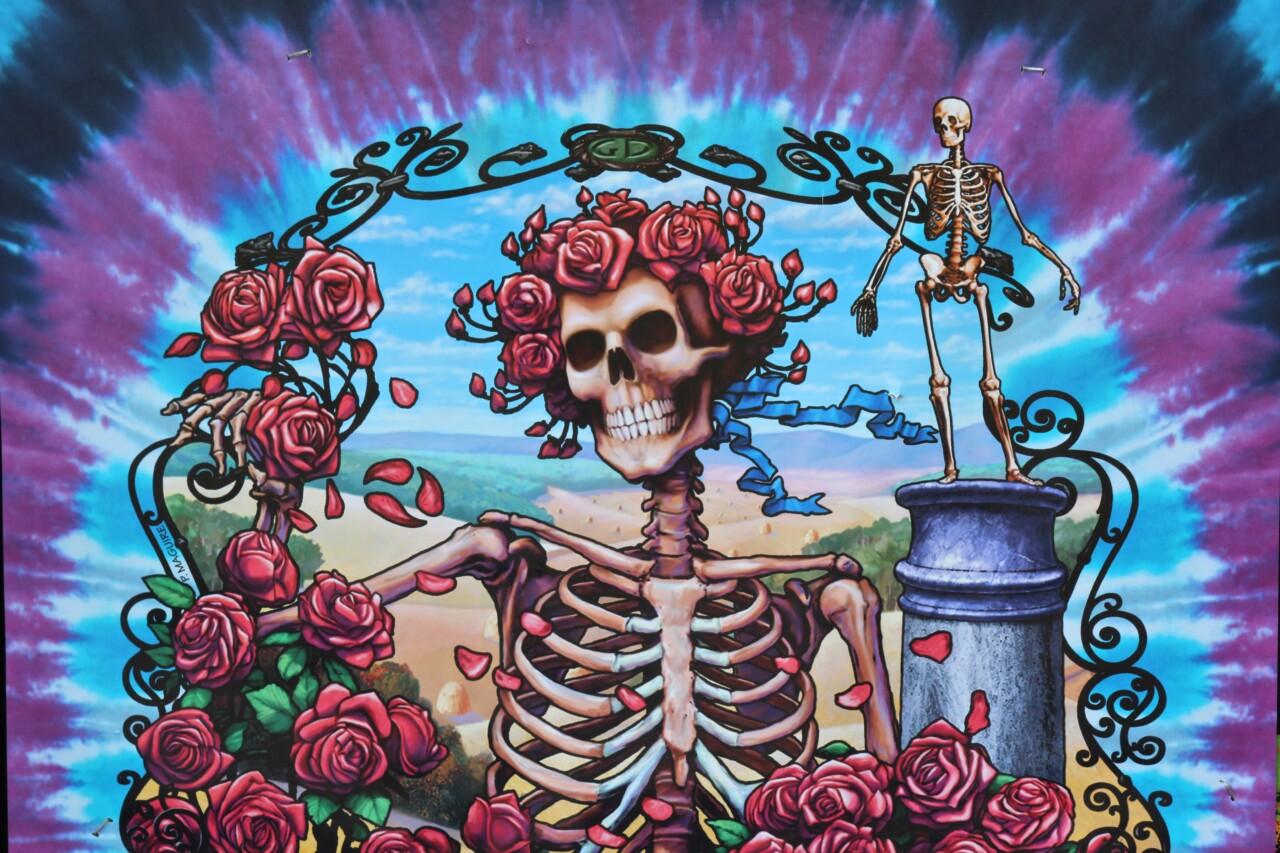I went to the cinema to see an annual showing of a Grateful Dead concert – this one was 50 years old.
I wrote a report on it. But my editor said you (yes you, dear reader) wouldn’t have a clue who the Grateful Dead even were. And even if you had heard of them you wouldn’t think they were still relevant.
So I wrote this instead. Now pass the joint and pay attention.
The Grateful Dead a.k.a. The Dead (formerly The Warlocks) are the gift the 1960s and 1970s counterculture is still giving.
Their contemporaries include The Byrds, Buffalo Springfield and Jefferson Airplane. Unlike those echoes of hippy-dom’s past, The Dead remain relevant. Why? Well because they have carved out their own musical niche and kept chipping away into the collective consciousness.
Their live performances have become legendary markers for the energies, feelings and moods that emerged in the sixties and still draw in those same personality types from new generations today.
For example, their first real piece of musical exposure came from the Acid Test events in San Francisco – where everyone present was doped up on LSD. LSD takes its user on a “trip” that melts away the distinction between the ego and the world. Both band and fans became at one with the universe and each other.
This breaking of the mental barrier allowed the band to craft their signature style: the extended jam.
Jamming became the cornerstone of their live sets throughout their career. Typically occurring during the second half of a concert, jamming could take the form of either one extended epic or a daisy chain of music weaving many songs into one continuous piece. If that audience was lucky, they got a mixture of both. The band never played the exact same show twice, as they constantly swapped the material on a nightly basis.
This style of juggling songs helped give the Dead a unique aura that caused fans to see as many shows as possible and to extensively document what songs were played.
Audio recordings of roughly 90% of their concerts are easily available today and still retain the same excitement and the feeling of living in the moment as when they were first recorded by some doped-up teenager enjoying life inside some auditorium.
You should know their names too: guitarists Jerry Garcia and Bob Weir, drummers Mickey Hart and Bill Kreutzmann, bassist Phil Lesh and keyboardist Ron “Pigpen” Mckernan.
The Dead never managed to reset music in the style of the iconic John, Paul, George, and Ringo. But then again this was never their intent. Where they excelled was connecting with a certain cosmic sensibility that allowed them to create moments of auditory nirvana.
Rather than break boundaries in the studio, it is as a live act that the Dead are unmatched. With the Dead the live music scene could never be the same again.
They were the forefathers of the jamband genre of performance, a style of performance that was directly lifted from how they organized live shows.
These performances lived on through their fans. The Dead were one of the first bands who allowed fans to record their live shows. A massive community traded recordings and the vibes spread. And it was not money but enthusiasm that led the way: the band’s only rule was people taping the shows couldn’t profit from the recordings.
It’s not easy to put into words why many people today (old and new) still dedicate themselves to the Dead. I’d say it comes down to the universal sense of escapism you get when you listen to a Grateful Dead show. When a show is really hot, you can go from having an out of body experience to rocking out in one evening.
(Huzzah, explained at last!) This is why I and many other Dead Heads got together in a London cinema to experience one of these concerts, a yearly tradition on par with Christmas and Halloween. This specific event was a 50 year old broadcast from Danish TV. It was superb.
You can now easily discover the Dead yourself through the many live show recordings available for free on the Internet Archive. Warning: you may never be the same.
If you’re young you may be shocked, but, even today, the original members of the band who are gratefully alive still tour and play the music that forged the band’s legacy nearly 60 years on.
The legacy of the Dead will live on. Long live the Dead!




